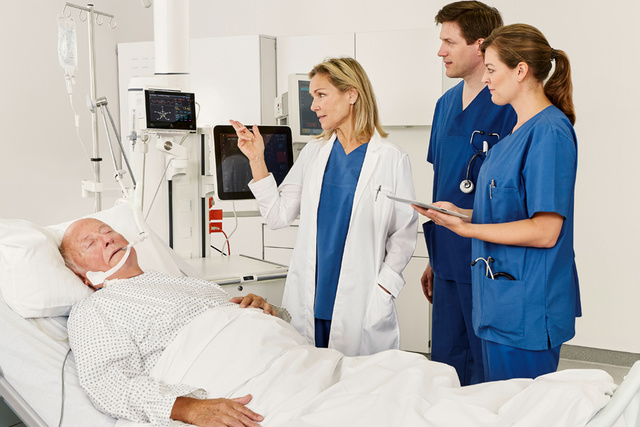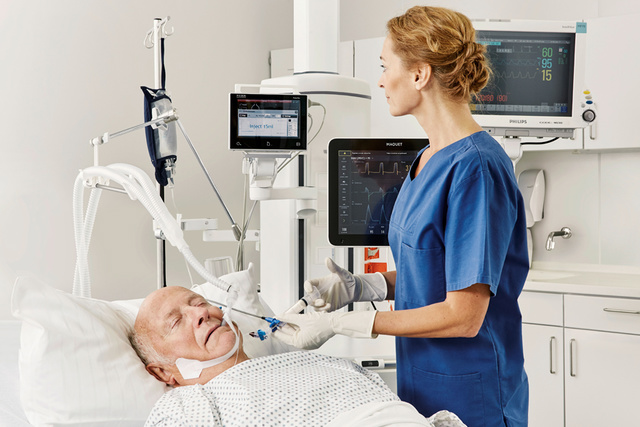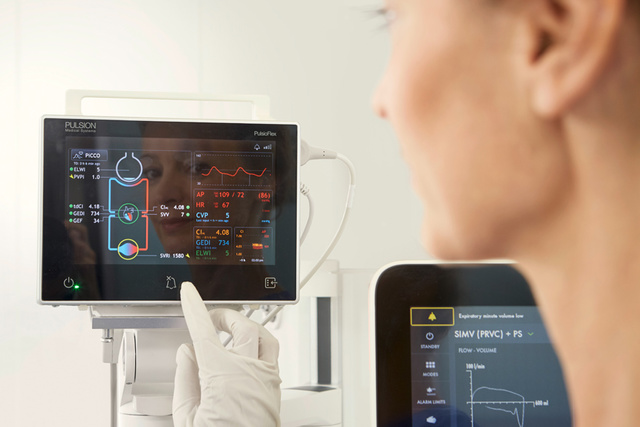Gelişmiş Hasta İzleme
Kapsamlı hemodinamik resmi elde edin

Karmaşık hemodinamik koşulları anlayın
Kritik rahatsızlığı bulunan hastanızın yaşamı bir sonraki terapötik aşama için verilecek doğru karara bağlıdır. Terapötik çatışmalar genellikle, güvenebileceğiniz güvenilir bilgilere ihtiyaç duyduğunuz yoğun bakım başucunda ortaya çıkar. Bir dizi güvenilir hemodinamik parametre, hastalarınız için en iyi bireysel tedavinin belirlenmesine yardımcı olabilir.[1]
Sorulacak hemodinamik sorular
İzleme, kendi başına hasta mortalitesini veya morbiditesini düşürmez - ancak, bir tedavi planı oluşturmak ve hastaya mümkün olan en kısa sürede bireysel amaca yönelik tedaviyi uygulamak için kullanılması gereken değerli bilgiler sağlar. Geniş bir bilgi temeli sağlamak için, terapi kararları için bir temel olarak bir dizi parametre sağlanabilir ve kullanılabilir.

Tedavi stratejilerini bireyselleştirme
Yoğun bakım hastalarında sıklıkla stabil olmayan bir hemodinamik durum meydana gelir. Net olmayan hacim durumu ve tedavi uyuşmazlıkları, uygun tedavi stratejisinin uygulanmasını zorlaştırır: Hacim genişlemesi mi? Vazopresör kullanımı veya inotropik destek mi?
Yeterli organ perfüzyonu ve optimum doku oksijenasyonu büyük önem taşır. Aynı zamanda, pulmoner ödem ve kesintili gaz değişimi ile sonuçlanabilecek aşırı hacim yüklenmesinden kaçınmak önemlidir.
Bu nedenle ileri hemodinamik izleme, hayat kurtaran terapötik stratejilerin uygulanmasında hayati bir role sahiptir. [2]
Kalp debisinin ve belirleyicilerinin dikkatli yönetimi, kritik hastaların resüsitatif süreci boyunca doktorlara rehberlik edebilir. Bireyselleştirilmiş hemodinamik izleme protokollerinin uyarlanması, optimize edilmiş terapötik müdahalelere yol açar ve sonuçları iyileştirme potansiyeline sahiptir.[3]

Hastalarınızın kapsamlı hemodinamik resmini inceler
Yoğun bakım hastalarında kardiyosirkülatuvar fonksiyonun izlenmesi büyük önem taşımaktadır. PiCCO, kalp debisi gibi hemodinamik parametrelerin minimal invaziv ölçümüne izin verir ve belirleyicileri: önyük, artyük ve kontraktilitedir. Ayrıca, ELWI parametresi ekstravasküler akciğer suyunun hassas bir şekilde değerlendirilmesini sağlar. Bu güvenilir hemodinamik parametre seti, kritik seviyedeki hastalarda en iyi kişiye özel tedaviyi belirlemeye yardımcı olabilir.

Hastalarınızın risk seviyesini sürekli olarak tespit edin
Bir bakışta hemodinamik parametrelerin bir özeti ve ayrıca eşik değerlerinin etkileşimi, tedavinin anında ve hedefe yönelik olarak ayarlanmasını sağlar. Hastanın hemodinamik durumundaki herhangi bir değişiklik hakkında sürekli olarak bilgi sağlamak, tedavi stratejilerinin her bir hastaya özel olarak ayarlanmasına yardımcı olur.
Ürünlerimizi keşfedin
Kendinize uygun doğru ürünleri ve çözümleri bulun